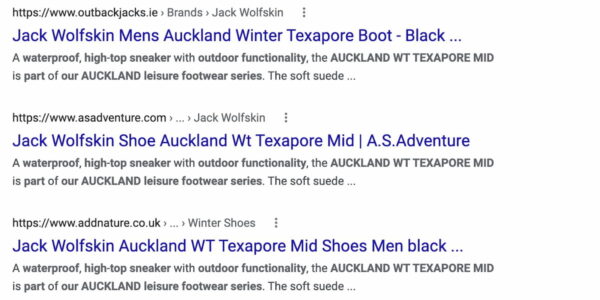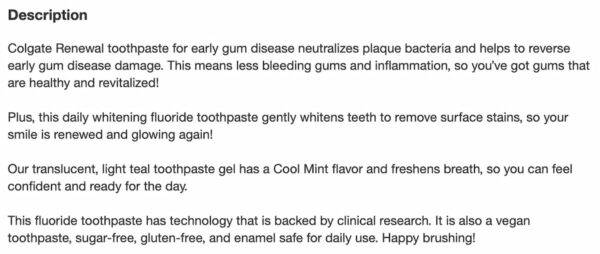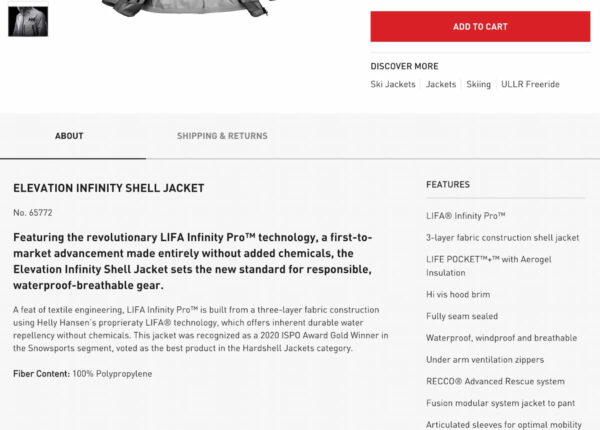These days, it seems as if everyone and their mother have an online store. Platforms such as WooCommerce and Shopify make it easy to start one, so why not? But, creating a shop doesn’t equal success. There are a lot of moving parts before you can celebrate sale after sale. One of those is writing great product descriptions.
Table of contents
- Why would you improve the descriptions for your products?
- 1. Always focus on your customer
- 2. Don’t rely on generic text from manufacturers
- 3. Don’t write for search engines (but do)
- 4. Focus on solving the user’s pain
- 5. Stay away from cliches and avoid using superlatives
- 6. Make it personal
- 7. Use user stories and examples
- Improve the product descriptions for an online store
Why would you improve the descriptions for your products?
Two of the most important tools you have at your disposal to sell your products are product photography and writing product descriptions. An online store has to work extra hard to make products on your product pages tangible for your customer. Customers can’t handle your products in the flesh, so they have to make do with a description and imagery — so these better are great!
Unfortunately, many ecommerce sites don’t take this to heart. There are a lot of opportunities for online stores to improve their offerings. That also means there’s a lot of room for forward-thinking online stores to conquer the market. Whatever you do, there’s always a chance to improve your product descriptions. Don’t rely on tedious and standard stuff!
You need more reasons to improve your product descriptions? Good product descriptions help you:
- communicate benefits more clearly
- establish a voice
- improve customer experience
- increase the chance of ranking your product in the search results
- get higher conversion rates
- get more return customers/build relationships
- create trust
See what we mean?
1. Always focus on your customer
Step number one in almost everything SEO is doing keyword research. The same goes for improving product descriptions. You need to know the product, the customer, and how they write or talk about this particular product. You need to know how the customer comes from realizing a need to buying a product from you: the user journey.
It might be that the manufacturer came up with a snazzy name and description that in no way aligns with the consumer’s thoughts about this product. A particle destroyer doesn’t scream vacuum cleaner, right? Don’t amplify that; keep it sensible and understandable.
Doing keyword research for products also gives you an idea about how to talk about products — not just about which words to use. Find out the real value of the product and use consumers’ way of talking to communicate that.
2. Don’t rely on generic text from manufacturers
It’s easy to use the descriptions provided by manufacturers. The content is in the data set, so why not use it? Well, there are a couple of reasons why you shouldn’t use that default description. One, many other online stores selling the same products use these descriptions. Two, many other online stores selling the same products use these descriptions. See, duplicate content!

It’s hard to stand out if you are like everyone else. Of course, it’s hard for some products to come up with a description that accurately describes the product in your unique way. Plus, you might have many slight variations of a product, causing much frustration in writing those individual descriptions. Still, if there’s only the slightest possibility of writing something that stands out — go for it.
In researching, search for your product in Google and see which competitor comes up. Analyze their writing and see how you can top that.
3. Don’t write for search engines (but do)
One of the most important things to remember is that you are writing for humans, not machines. Of course, writing a good product description makes it easier for search engines to understand it, but that shouldn’t be your goal. Your goal is to communicate the product’s value to customers and sell it as a solution.
Doing keyword research will give you an idea of which terms a product ranks for — and you know what people use to describe it. Combining these helps you write great product descriptions that can do well for search engines and consumers alike!
Don’t forget to use Yoast SEO to get your product pages ready for the search engines, plus, if your site runs on WooCommerce, you’ll enjoy our WooCommerce SEO add-on. If you want to broaden your horizon and increase the chance of your site turning up in Google, you could start blogging on your ecommerce store.
4. Focus on solving the user’s pain
It’s easy to list a selection of plusses that you think are a good fit for the product. Maybe add some specifications while you are at it. But, then you might end up with a product description written from your perspective and not the consumers. What are they gaining from using your product? What’s the solution? How do you plan to solve the user’s pain?
Remember, you are not selling dental picks, but you are selling a solution for bleeding gums. Sometimes, consumers don’t even know the name of the product they are looking for — they want to get their problem fixed. Selling your dental picks as simply that might mean missing out on the people looking for a quick and easy way can help them reduce their woes.
Focussing on the user intent makes it possible to uncover those problems and helps you offer solutions with your product.

5. Stay away from cliches and avoid using superlatives
Calling every product the best will achieve the opposite — nobody will believe anything anymore. Words have power, but you need to learn how to wield that power. Think carefully about which words you use because most of the time, less is more. Omit needless words. By using stripped-back language, that single power word can do the job. Of course, if your products have won awards or other accolades, you can brag about it — please do so tastefully!

The same goes for cliches in your writing. Don’t use cliched language if a regular piece of text can do the job. Keep in mind that not everyone knows the same idioms as you do. Keep your content easy to understand, easy to scan,
and easy to remember.

6. Make it personal
Not every piece of text has to be borings and distant. You can use your voice and make it more personal. Develop your tone of voice and stick to it! It makes you recognizable, it helps your branding, making you stand out from the crowd.
Keep in mind that you are not simply selling a product to a person, but you are selling an experience. And, since you want that customer to return sometime in the future, it better be a good experience!

7. Use user stories and examples
It shouldn’t always be you that tells the story of a product — the best seller of your product is someone who bought it already. Ask existing customers for input and use their insights to enhance your content. You might even incorporate their stories in your product descriptions.
Use visual and textual examples of your product in use by actual customers. By doing this, potential customers get a better feel for the product, its benefits, and usage.
Improve the product descriptions for an online store
In this article, we’ve highlighted seven ways to write better product descriptions for your ecommerce site — be that a Shopify or a WooCommerce site. Of course, there are many more ways of doing that, but with these simple tips, anyone can improve the marketing copy of their products. Looking for more ecommerce SEO tips? We have an ultimate guide on ecommerce SEO that touches on a lot of subjects.
The post 7 ways to improve product descriptions in your online store appeared first on Yoast.